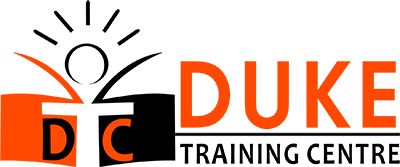
A Professional Cloud Architect enables organizations to leverage Google Cloud technologies. With a thorough understanding of cloud architecture and Google Cloud Platform, this individual can design, develop, and manage robust, secure, scalable, highly available, and dynamic solutions to drive business objectives.
The Google Cloud Certified – Professional Cloud Architect exam assesses your ability to:
- Design and plan a cloud solution architecture
- Manage and provision the cloud solution infrastructure
- Design for security and compliance
- Analyze and optimize technical and business processes
- Manage implementations of cloud architecture
- Ensure solution and operations reliability
About this certification exam
This exam objectively measures an individual’s ability to demonstrate the critical job skills for the role. To earn this certification you must pass the Professional Cloud Architect exam. The format is multiple choice and multiple select. The exam has no prerequisites. This exam must be taken in-person at one of our testing center locations.
- Length: 2 hours
- Registration fee: USD $200
- Language: English, Japanese, Spanish, Portuguese
Certification Exam Guide
Section 1: Designing and planning a cloud solution architecture
1.1 Designing a solution infrastructure that meets business requirements. Considerations include:
- business use cases and product strategy
- cost optimization
- supporting the application design
- integration
- movement of data
- tradeoffs
- build, buy or modify
- success measurements (e.g., Key Performance Indicators (KPI), Return on Investment (ROI), metrics)
- Compliance and observability
1.2 Designing a solution infrastructure that meets technical requirements. Considerations include:
- high availability and failover design
- elasticity of cloud resources
- scalability to meet growth requirements
1.3 Designing network, storage, and compute resources. Considerations include:
- integration with on premises/multi-cloud environments
- Cloud native networking (VPC, peering, firewalls, container networking)
- identification of data processing pipeline
- matching data characteristics to storage systems
- data flow diagrams
- storage system structure (e.g., Object, File, RDBMS, NoSQL, NewSQL)
- mapping compute needs to platform products
1.4 Creating a migration plan (i.e., documents and architectural diagrams). Considerations include:
- integrating solution with existing systems
- migrating systems and data to support the solution
- licensing mapping
- network and management planning
- testing and proof-of-concept
1.5 Envisioning future solution improvements. Considerations include:
- cloud and technology improvements
- business needs evolution
- evangelism and advocacy
Section 2: Managing and provisioning solution Infrastructure
2.1 Configuring network topologies. Considerations include:
- extending to on-premise (hybrid networking)
- extending to a multi-cloud environment which may include GCP to GCP communication
- security
- data protection
2.2 Configuring individual storage systems. Considerations include:
- data storage allocation
- data processing/compute provisioning
- security and access management
- network configuration for data transfer and latency
- data retention and data lifecycle management
- data growth management
2.3 Configuring compute systems. Considerations include:
- compute system provisioning
- compute volatility configuration (preemptible vs. standard)
- network configuration for compute nodes
- infrastructure provisioning technology configuration (e.g. Chef/Puppet/Ansible/Terraform)
- container orchestration (e.g. Kubernetes)
Section 3: Designing for security and compliance
3.1 Designing for security. Considerations include:
- Identity and Access Management (IAM)
- Resource hierarchy (organizations, folders, projects)
- data security (key management, encryption)
- penetration testing
- Separation of Duties (SoD)
- security controls
- Managing customer-supplied encryption keys with Cloud KMS
3.2 Designing for legal compliance. Considerations include:
- legislation (e.g., Health Insurance Portability and Accountability Act (HIPAA), Children’s Online Privacy Protection Act (COPPA), etc.)
- audits (including logs)
- certification (e.g., Information Technology Infrastructure Library (ITIL) framework)
Section 4: Analyzing and optimizing technical and business processes
4.1 Analyzing and defining technical processes. Considerations include:
- Software Development Lifecycle Plan (SDLC)
- continuous integration / continuous deployment
- troubleshooting / post mortem analysis culture
- testing and validation
- IT enterprise process (e.g. ITIL)
- business continuity and disaster recovery
4.2 Analyzing and defining business processes. Considerations include:
- stakeholder management (e.g. Influencing and facilitation)
- change management
- team assessment / skills readiness
- decision making process
- customer success management
- cost optimization / resource optimization (Capex / Opex)
4.3 Developing procedures to test resilience of solution in production (e.g., DiRT and Simian Army)
Section 5: Managing implementation
5.1 Advising development/operation team(s) to ensure successful deployment of the solution. Considerations include:
- application development
- API best practices
- testing frameworks (load/unit/integration)
- data and system migration tooling
5.2 Interacting with Google Cloud using GCP SDK (gcloud, gsutil and bq). Considerations include:
- local installation
- Google Cloud Shell
Section 6: Ensuring solution and operations reliability
6.1 Monitoring/Logging/Alerting solution
6.2 Deployment and release management
6.3 Supporting operational troubleshooting
6.4 Evaluating quality control measures
Sample Case Studies
During the exam for the Cloud Architect Certification, some of the questions may refer you to a case study that describes a fictitious business and solution concept. These case studies are intended to provide additional context to help you choose your answer(s).







